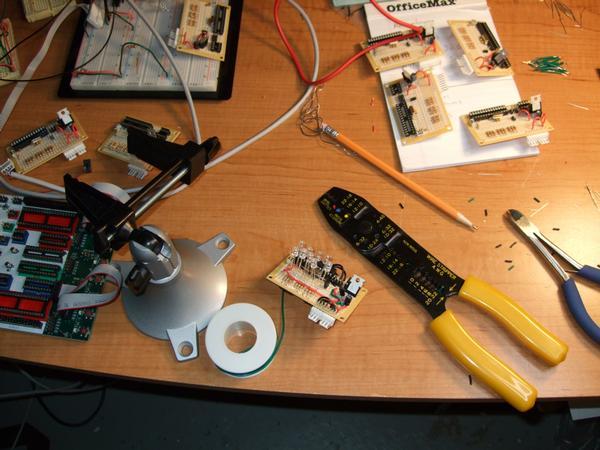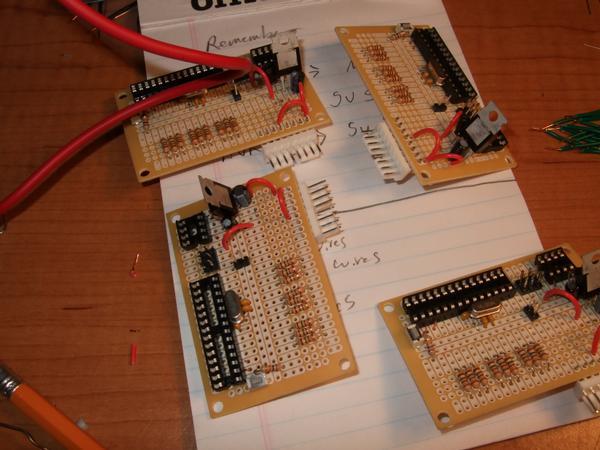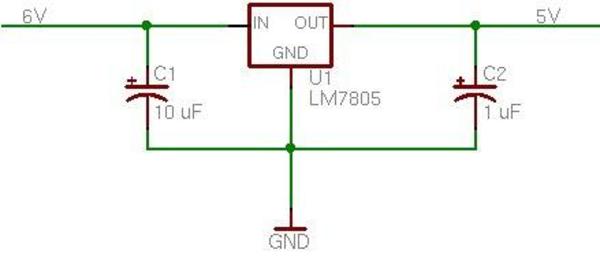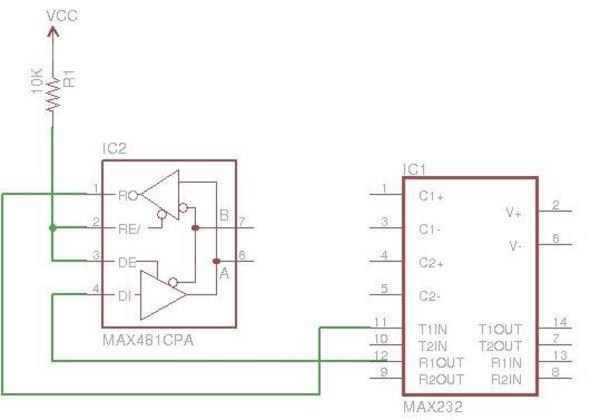
To describe what is going on in this picture
- I would first send command messages for the candle via RS232 serial signal from the computer to the small board on the left which would convert it to a RS485 signal so it could be broad cast to all the candles throughout my dungeon.
- An RS485 signal travels from the converter (small board on the left) to the larger board on the right which is my led candle prototype.
- Then on a temporary basis I have debug messages sent via TWI serial interface from the candle prototype(large board on the left) to the circuit for debugging purposes (large board in the top right).
- That board then sends the debug messages via RS232 back into the computer to display on a terminal screen.
This may not have been the best way to do this, but it sure was fun seeing if I could make it work. All that being said on my next project I really need to figure out how to properly debug Atmega microcontrollers.













